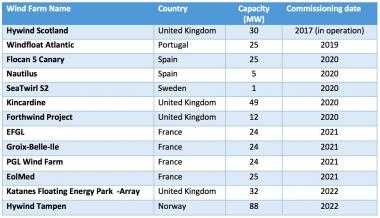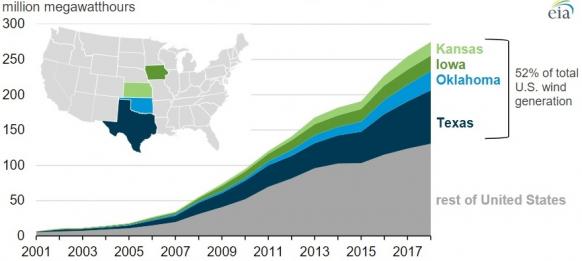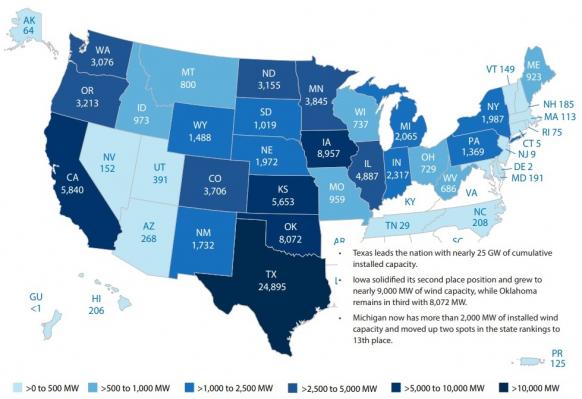Equinor gains permit for world’s largest floating wind farm; ScottishPower to build 50 MW wind battery
Our pick of the latest wind power news you need to know.

Related Articles
Equinor plans to build 200 MW floating wind farm in Canary Islands
Norwegian oil major Equinor is planning to build the world's largest floating offshore wind turbine in the Spanish Canary Islands located west of Morocco, according to media reports.
Equinor has been allocated a permit to develop a 200 MW floating wind facility in a deep water sea area, regional government officials said.
A number of other developers have expressed interest in developing commercial-scale floating wind farms in Canary Island waters, the officials said.
The first offshore wind facility could be commissioned by 2024 but the government must implement a development framework before construction can begin, the government said.
Pre-commercial floating wind projects due online by 2022
(Click image to enlarge)
Source: WindEurope's Floating Offshore Wind Energy: a Policy Blueprint for Europe (October 2018).
Thus far, Spain's offshore wind development has been limited to small-scale research projects such as the EU-funded Elican project.
The Elican team installed a 5 MW Siemens Gamesa wind turbine using fixed-bottom foundations without the use of heavy-lift vessels.
Commissioned in December 2018, the Elican turbine system was assembled onshore and installed using a telescopic tower system which acts as a self-stable floating barge. Once ballasted to the seabed, the tower was lifted to final position by cables and jacks.
This innovative method could reduce installation costs by 30 to 40%, according to Elican partners.
Wind group ScottishPower to build U.K.'s largest battery
UK power group ScottishPower is to build a 50 MW lithium-ion battery, the U.K.'s largest, to support its 539 MW Whitelee wind farm in Scotland, the company announced June 10.
ScottishPower has received government approval for the project and the battery is expected to be fully operational by the end of 2020, according to media reports. The company is planning further storage projects in 2020-2021, the reports said.
The battery will be able to fully charge in less than 30 minutes and will provide resilience and stability to the national grid, ScottishPower said.
Last October, ScottishPower agreed to sell its remaining fossil fuel assets to become the first vertically-integrated UK power group to produce 100% of its electricity from wind energy. The company agreed to sell its remaining 2.6 GW gas and hydroelectric power plant fleet to Drax for a cash price of 702 million pounds ($891.3 million).
ScottishPower plans to spend 2 billion pounds in clean energy investment in the UK in 2019 and a total 6 billion pounds by 2022, the company said in March.
Central US states dominate wind generation
The four states of Texas, Oklahoma, Iowa and Kansas generated 52% of U.S. wind output in 2018, the Energy Information Administration (EIA) said in a note published June 7.
U.S. wind output was 275 TWh in 2018 and the EIA's figures highlight the dominance of central states in the U.S. wind power industry. High wind resources and industry buildout has cut construction costs and operations and maintenance (O&M) costs in these regions.
"Each of these states has seen significant growth in wind capacity even after meeting renewable portfolio standards (RPS) targets or voluntary goals," EIA noted.
US wind generation in 2001-2018
(Click image to enlarge)
Texas has generated over 25% of U.S. wind power output in each of the past three years. Texas wind capacity is concentrated in rural northern and western areas and transmission line projects authorized in 2008 have connected wind power output with population centers in southern and eastern areas of the state.
Oklahoma accounted for over 10% of total U.S. wind generation in 2018. Wind power capacity in the state more than doubled between 2014 and 2018.
In addition, the five states of California, Illinois, Minnesota, North Dakota and Colorado accounted for 20% of U.S. power generation in 2018, EIA said.
US installed wind capacity by state at end of Q1 2019
(Click image to enlarge)
Source: AWEA, April 2019.
U.S. wind installations are forecast to surge in the next two years as developers race to meet production tax credit (PTC) deadlines.
Wood Mackenzie predicts 11.0 GW of capacity will be installed in the U.S. in 2019, rising to 12.9 GW in 2020.
The U.S. installed 841 MW of wind power capacity in the first quarter, double the amount installed in Q1 2018, the American Wind Energy Association (AWEA) said its latest quarterly market report. Some 536 MW of this capacity was installed in Iowa, where installed capacity is now almost 9 GW.
The U.S. wind development pipeline grew by 11% in the first quarter of 2019 to a record capacity of 39.2 GW, AWEA said.
The pipeline includes plants under construction and projects which have signed a long-term contract, placed turbine orders or are proceeding under utility ownership. Wind developers signed 2.7 GW of wind power purchase agreements (PPAs) in the first quarter. Utilities also announced plans to build and own a further 1.0 GW.
New Energy Update



